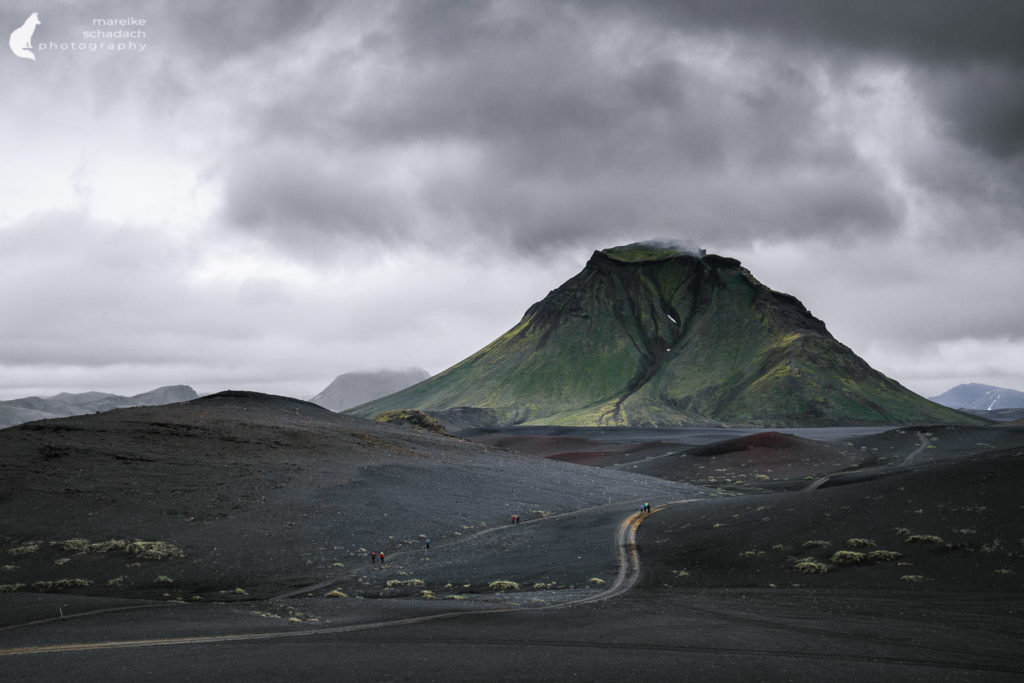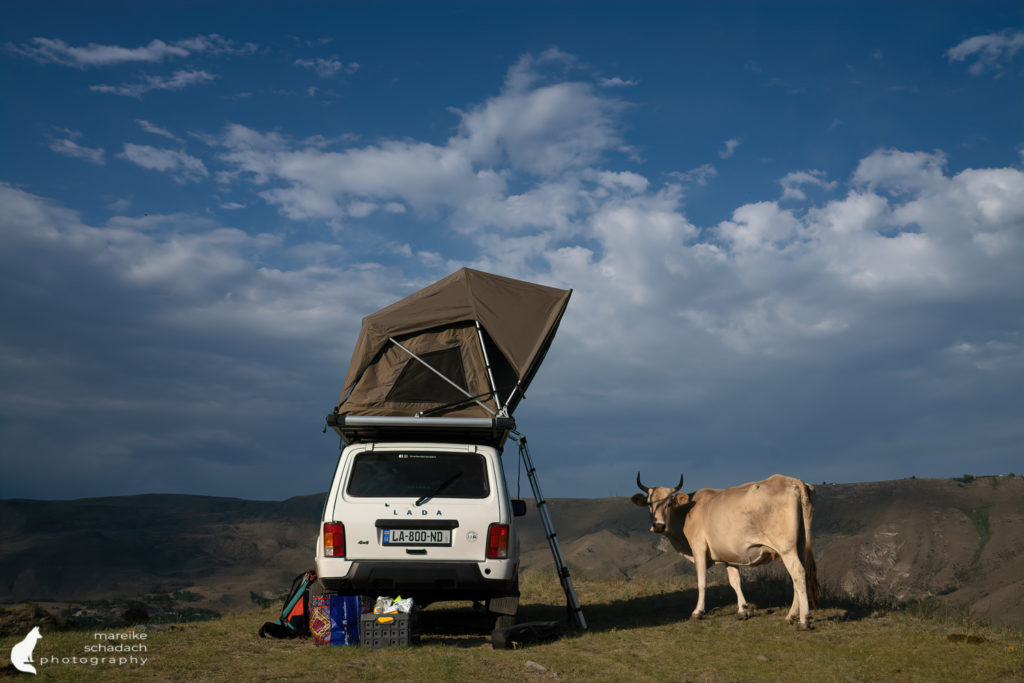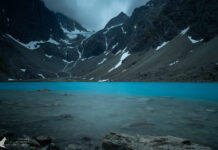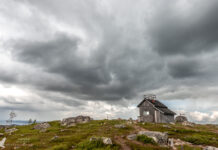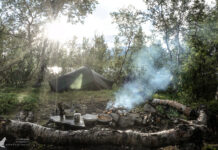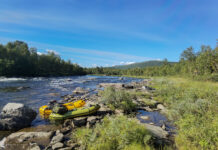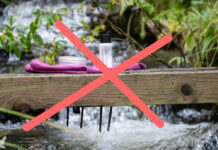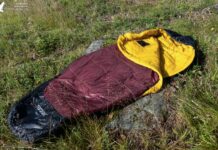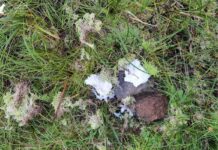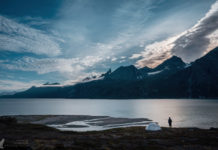What applies to everyday life at home becomes even more important during a hiking or paddling tour: The best waste is that which is not produced. After all, the distance to the next disposal bin can easily be tens of kilometers. Avoiding waste on a trekking tour can be quite simple and sometimes really tasty - save packaging, repackaging, making snacks and trekking food yourself, finding alternatives, or doing without something.
Unassigned, unpaid advertising. The article contains affiliate links.
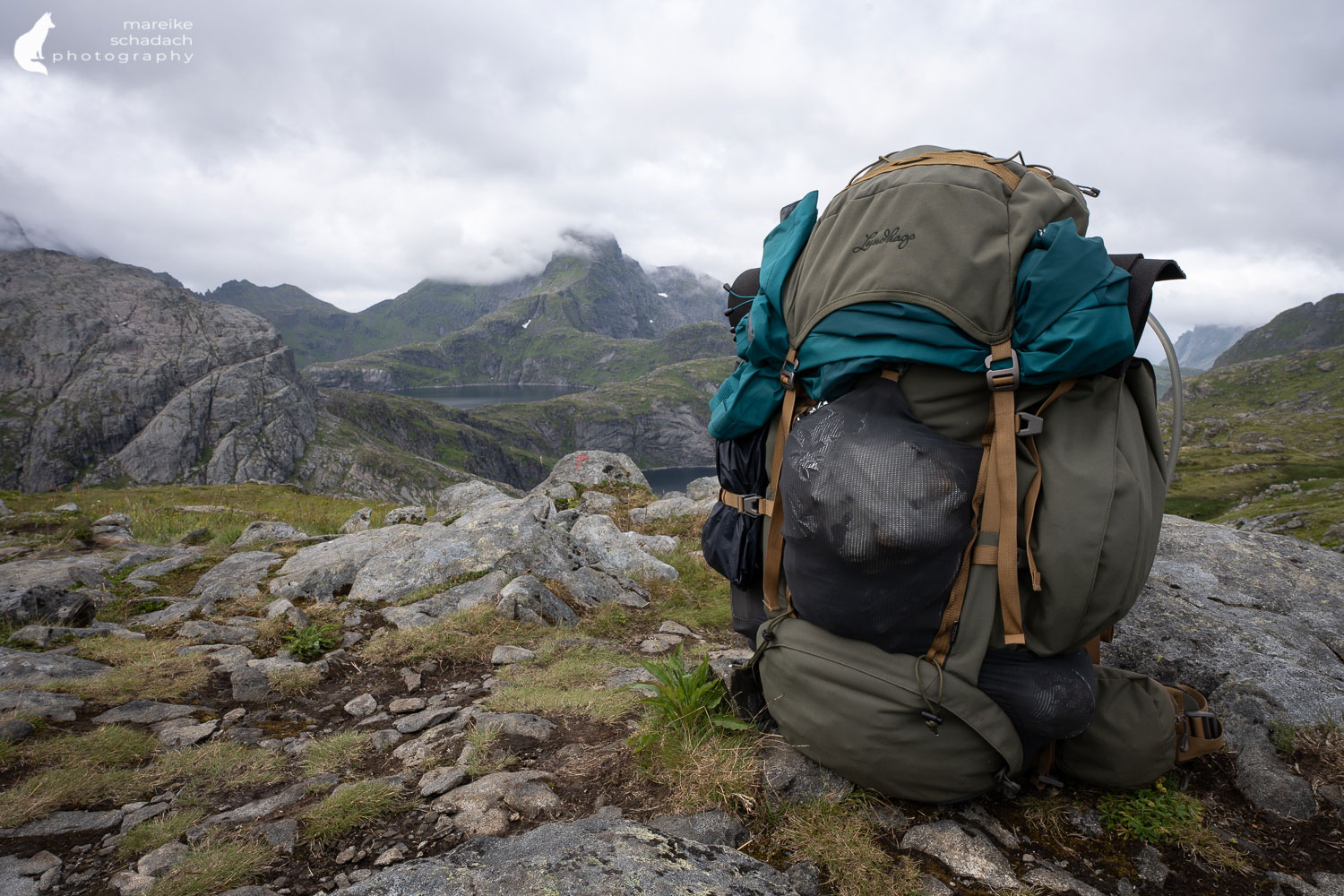
#1 Prepare your own tasty cereal bars and snacks
Muesli bars should not be missed on any hiking tour. However, the ratio between food and packaging is particularly unfavorable for these popular energy sources. But there is a very simple solution: make your own muesli bars and pack several together in a resealable zip bag.


#2 Reuse empty packaging
Some packages, for example of muesli or the bags of trail mix and dried fruit are very sturdy. Way too good to throw away. Quickly clean them up a bit and then use them again as new packaging for food supplies. Add a rubber band and it sits and holds. This also works at home. I just put my homemade granola bars in a cleaned old wrapper.
#3 Make your own trekking food & packaging-free shopping
Portion-packed trekking meals or instant noodles quickly fill up the garbage bag on tour. It's more waste-saving to make your own trekking food and fill several portions in a reusable ziplock bag.
Is there a store in your city where you can do packaging-free shopping? In Berlin, for example, you can go to Original Unverpackt in Kreuzberg or in Fair unverpackt in Charlottenburg. The organic supermarket chains Bio Company, Veganz, and Denn's Biomarkt have also set up unpackaged stations in some of their stores.

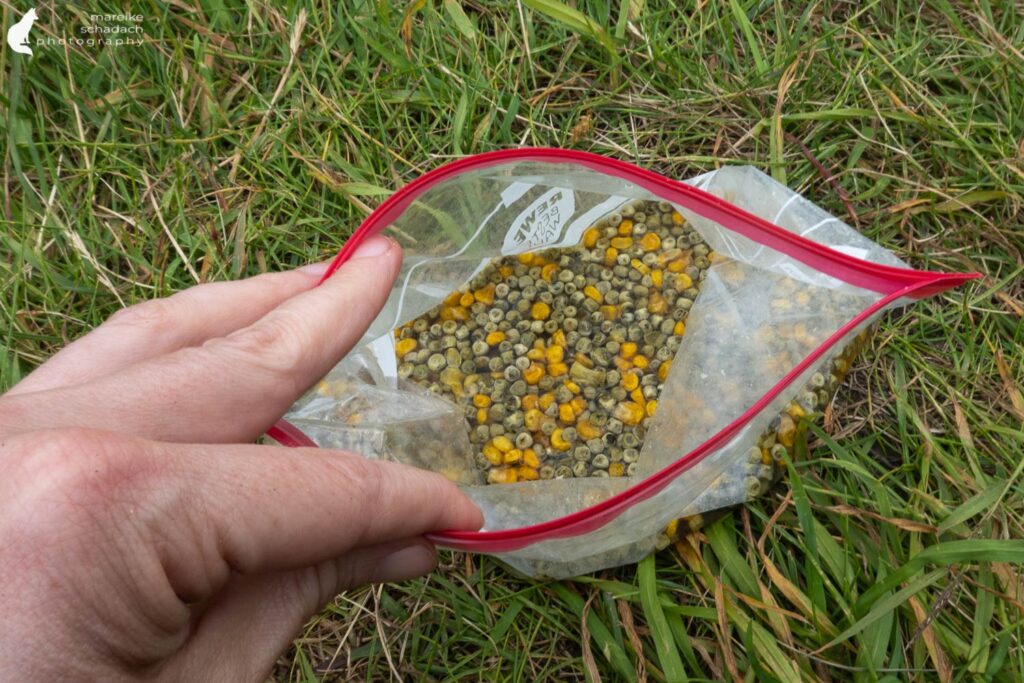
#4 Refillable bottles instead of PET bottles
PET bottles are re-collected and recycled through a deposit system in Germany. Nevertheless, it costs energy to produce, transport, fill, collect and recycle these bottles. In many countries, PET bottles are not collected separately and end up in landfills. It is better to use reusable bottles right away, such as the Nalgene bottles. On a trekking tour one has anyway one's refillable bottles or drinking bladders and if necessary something to treat drinking water. The situation may be different if you are traveling by camper. But even there you can refill your canisters and do not need to buy bottles.

#5 Avoid disposable mini bottles
Who does not know those mini bottles of shampoo and shower gel in hotels or the shelves with travel items in the drugstore? Of course, if you're going on tour, you don't want to take the 500 ml bottle of shower gel with you, so the mini bottles are very convenient and quickly end up in the shopping basket or are snatched from hotels. When I was a little kid, my grandpa always brought me a collection of soaps, shower gels, and shampoos from his senior trips. I had two giant bags. What a treasure that was back then!
But again, there are several more eco-friendly alternatives right now: If using mini bottles, make sure you can refill them. Some bottles are very stable and close reliably. So it doesn't have to be the expensive bottle from the outdoor outfitter. Instead of liquid shower gel and shampoo, you can also simply take solid soap or solid shampoo in a box. There works, for example, the good old curd soap or the organic products from Lush. By the way, liquid products are available at Lush in tightly screwable containers that you can return to Lush for reuse.
#6 Use less soap
Wash-up water is also waste and harms nature. Therefore, use it sparingly on the road and always at a sufficient distance (min. 60 meters) from the water. Rinsing dishes with hot water alone or with a sand scrub is also excellent. Your shirts and socks don't need that much detergent either: just hang them in the water overnight and let them soak properly.
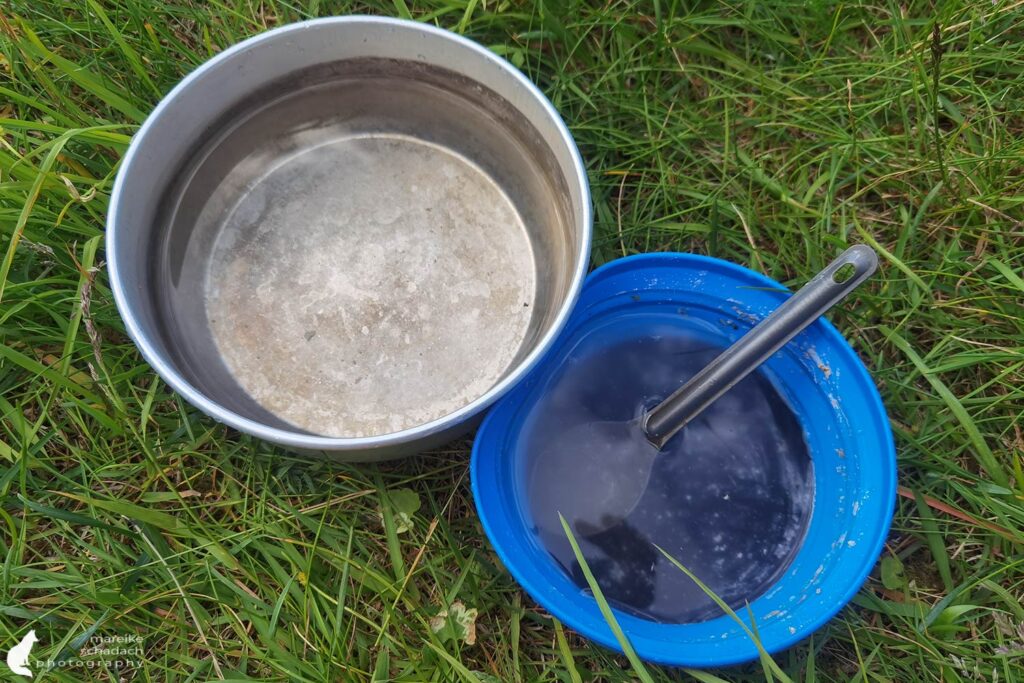

#7 Handkerchiefs and toilet paper
Ok, this might not be so fashionable now, but it's super practical: instead of stuffing your pockets with used tissues, just snort into nature. Take a leaf from a tree or plant, or snort directly onto the ground with one nostril held shut.
Then take it a step further: just like natural handkerchiefs, there is of course natural toilet paper such as leaves of leaves, smoothly polished stones or snow.
#8 Avoid food waste
"Eat your plate and you'll have good weather tomorrow!" Who hasn't heard this phrase? At home, one simply puts the leftovers in the refrigerator and reheats them the next day. On tour, it's not quite so easy; depending on the temperature, leftovers can quickly become inedible. Good meal planning or a flexible stomach will help avoid leftovers. If the weather permits, then a well-sealed Tupperware box also helps.

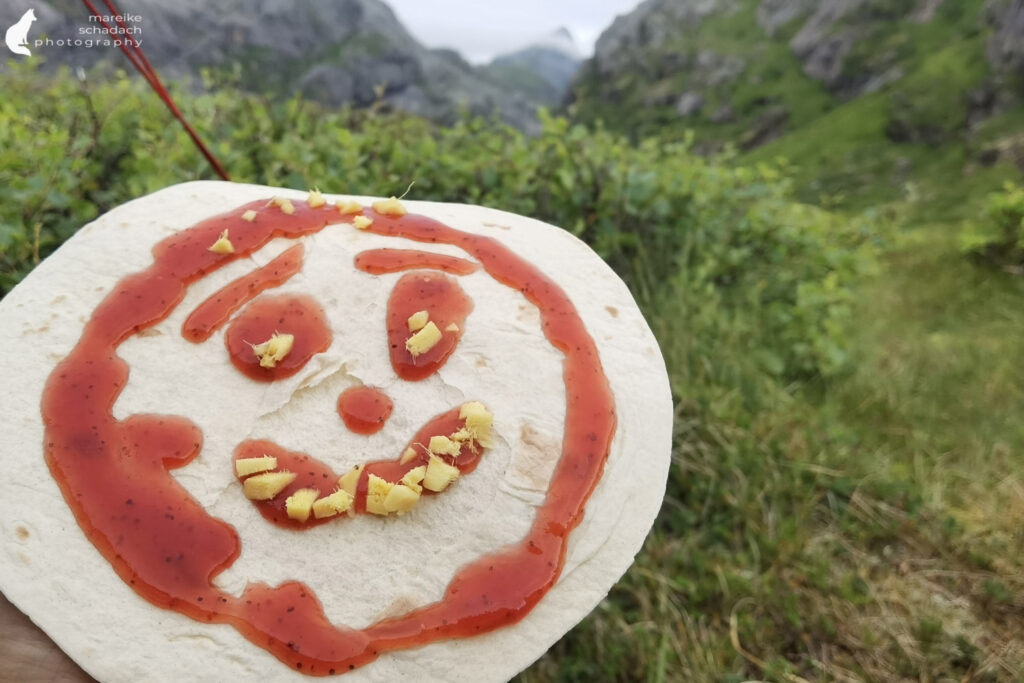
#9 Leftover shelves in communal kitchens
In the communal kitchens of cabins or campsites, there are often "leftover shelves" where you can find food no longer needed by departing campers. Sometimes there are also gas cartridges or half-full spirit bottles. Just have a look around in the communal kitchen to see if you can use some of the leftovers. It would be a pity if it is thrown away. Likewise, other campers will be happy if you donate your no longer-needed provisions to the community.
Why burning garbage on tour is not a solution
The responsibility you bear as a hiker for nature and your peers is multiplied many times over when you light a campfire. You need to know how, where and with what to light a fire, whether it is allowed at all and, above all, how to extinguish it again and how to rebuild it afterwards. As the drought in our forests increases, so does the risk of forest fires. In 2021, the total number of forest fires in Germany was 548, of which 128 fires were caused by negligence. Find out about the current forest fire danger level, for example on the DWD website, and what regulations apply at the respective danger levels.
It's better to pack up and dispose of all your trash. Food scraps often do not burn completely and can attract animals. Never burn toilet paper on the spot where you do your business, instead, burn it in a safe fireplace. Under no circumstances should plastic or coated packaging material end up in the fire, as toxic, sometimes carcinogenic gases are produced. Residues remain in the ash and thus also get into nature.

Everything in its place - waste separation during / after the tour
At some point even the most beautiful tour is over, the toilet paper and the coffee are all gone and the garbage bag is full. And it's full of all kinds of things... because who does waste separation on a trekking tour? Actually, why not? It doesn't make the garbage heavier or multiply it. There is often a waste separation at the parking lots of the trailheads or in the settlement that is the destination of the tour. Inform yourself beforehand, then you know what makes sense on the trail and what does not.
Tip: when preparing for the tour, by choosing your food or repackaging if necessary, you can not only reduce waste but also the effort required for waste separation and also the weight that you have to carry. Glass on tour, for example, pesto in a jar or oil in a glass bottle, is a no go. Besides its enormous weight, it breaks easily, and sooner or later someone cuts their fingers or soles. If not you, then perhaps the next hiker who lies down in the grass or a wild animal.

Book tips for more sustainability and waste reduction on tour and in everyday life
You want more tips on how to avoid waste on tour and in general and bring more sustainability into your camping vacation? Then I have three book recommendations for you. If you buy a book or another article via an affiliate link, I get a small commission and you help me to keep filling Fernweh-Motive with interesting articles. The product will not be more expensive for you.
Do you have any other ideas for reducing waste on tour? If yes, then write me a comment!
Do you want to know when there are new articles on my blog? Then follow me on Facebook, Pinterest or Instagram. I would also be very happy if you share my article with your friends.
Recommendations for further Reading
You are still looking for an idea for your next camping trip in nature? Then take a look at my two following articles:




